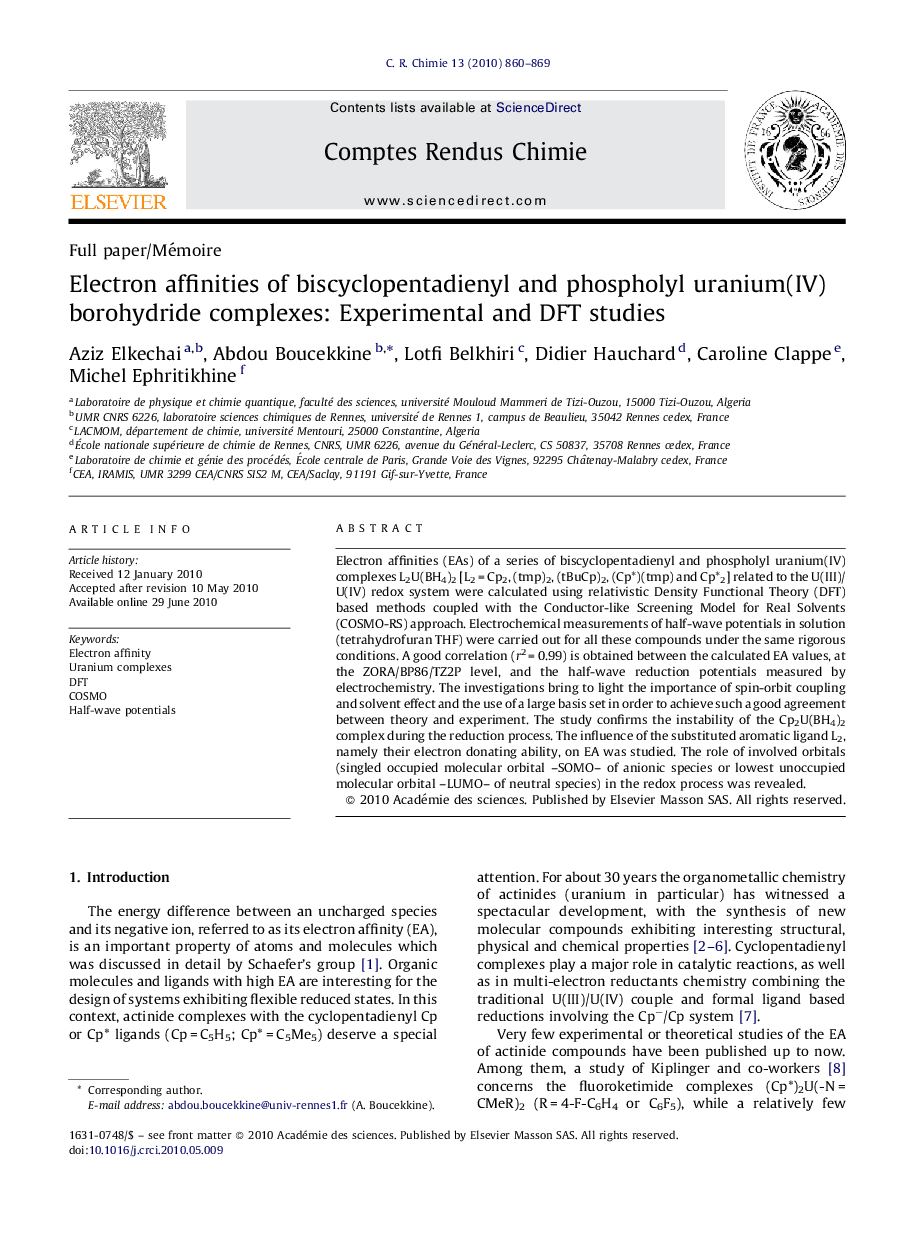| Article ID | Journal | Published Year | Pages | File Type |
|---|---|---|---|---|
| 171200 | Comptes Rendus Chimie | 2010 | 10 Pages |
Electron affinities (EAs) of a series of biscyclopentadienyl and phospholyl uranium(IV) complexes L2U(BH4)2 [L2 = Cp2, (tmp)2, (tBuCp)2, (Cp*)(tmp) and Cp*2] related to the U(III)/U(IV) redox system were calculated using relativistic Density Functional Theory (DFT) based methods coupled with the Conductor-like Screening Model for Real Solvents (COSMO-RS) approach. Electrochemical measurements of half-wave potentials in solution (tetrahydrofuran THF) were carried out for all these compounds under the same rigorous conditions. A good correlation (r2 = 0.99) is obtained between the calculated EA values, at the ZORA/BP86/TZ2P level, and the half-wave reduction potentials measured by electrochemistry. The investigations bring to light the importance of spin-orbit coupling and solvent effect and the use of a large basis set in order to achieve such a good agreement between theory and experiment. The study confirms the instability of the Cp2U(BH4)2 complex during the reduction process. The influence of the substituted aromatic ligand L2, namely their electron donating ability, on EA was studied. The role of involved orbitals (singled occupied molecular orbital –SOMO– of anionic species or lowest unoccupied molecular orbital –LUMO– of neutral species) in the redox process was revealed.
